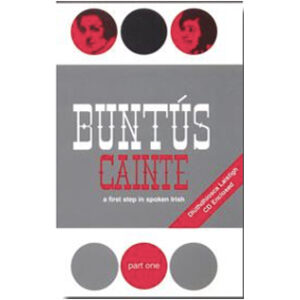Aimsir Láithreach – Briathra Rialta
Affirmative Statements
In making affirmative statements in the present tense, all changes are made at the end of the verb. First, identify the root of the verb as follows:
- For the majority of First Conjugation (usually one syllable) verbs, the entire verb is the root. Please refer to the samplaí (examples) in the chart below. An exception is when the verb ends with “igh.” In that case, if there is an accented vowel immediately before the “igh,” simply drop the “igh” to expose the root. In all other cases, delete the “igh” and replace it with an “í”. Please refer to the samplaí (examples) in the chart below. Also, be aware that there are a few two syllable verbs in the First Conjugation which maintain two syllables in the root. [T]
- For Second Conjugation (usually multi-syllable) verbs, part or all of the end of the verb is generally removed to reveal the root. Whenever these verbs end in “(a)igh” (the most common type), simply drop that syllable. Please refer to the samplaí (examples) in the chart below. In most other cases, squeeze the vowels out of the last syllable and tack the remaining consonant(s) onto the end of the first syllable. For example, with the verb “codail,” squeeze the “ai” out of the second syllable and add the remaining “l” to the end of the first syllable to make the root “codl…”. Please refer to the samplaí (examples) in the chart below.
Secound, to the root add these endings:
For First Conjugation verbs, add:
- “…(a)im” in the first person singular, or
“…(e)ann” in all other cases.
For Second Conjugation verbs, add:
- “…(a)ím” in the first person singular, and
“…(a)íonn” in all other cases.
Negative Statements and Questions
Negative Statements and Questions are constructed in the present tense by making these changes to the affirmative statement form:
- Negative Statements – Add “Ní” before the verb, and séimhiú (lenite) the initial consonant in the verb where possible.
- Direct Questions – Add “An” before the verb, and úrú (eclipse) the initial consonant in the verb where possible.
- Negative Questions – Add “Nach” before the verb, and úrú (eclipse) the initial consonant in the verb where possible. If the verb begins in a vowel, add “n-” in front of the vowel.
Please refer to the samplaí (examples) in the chart below.
